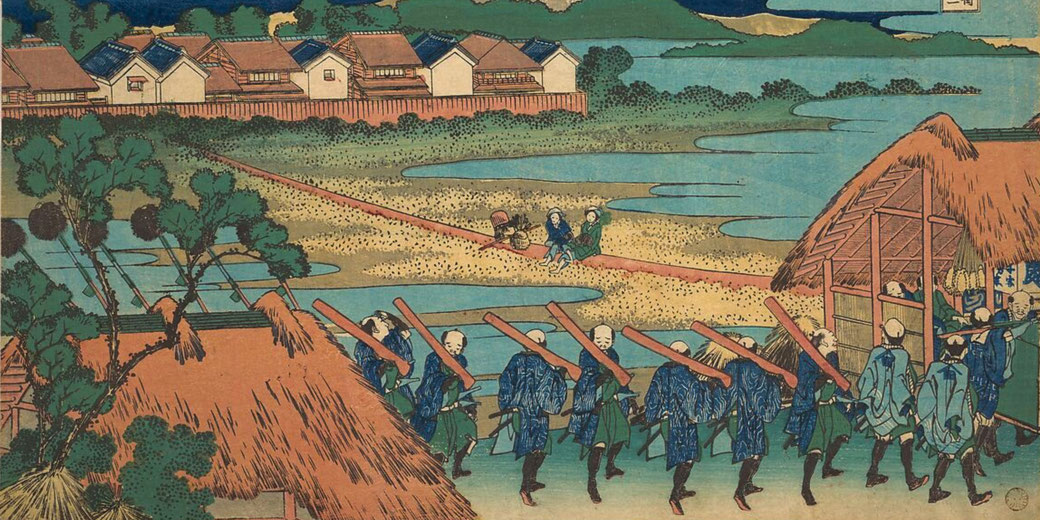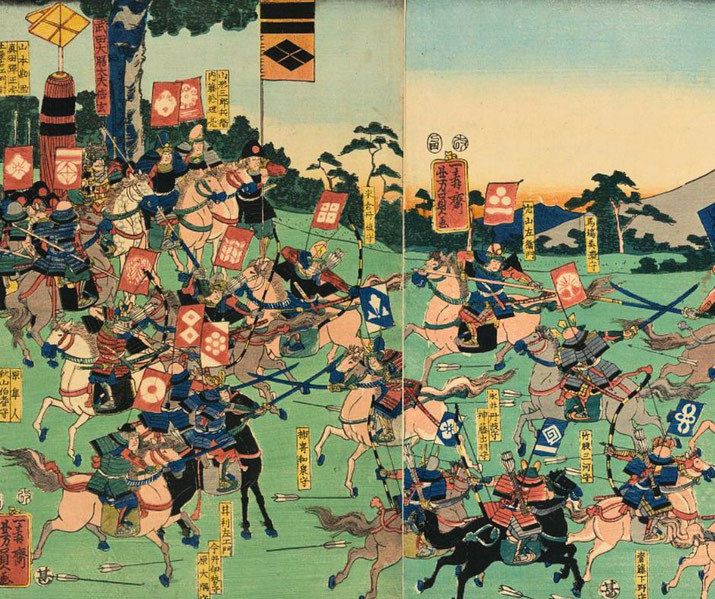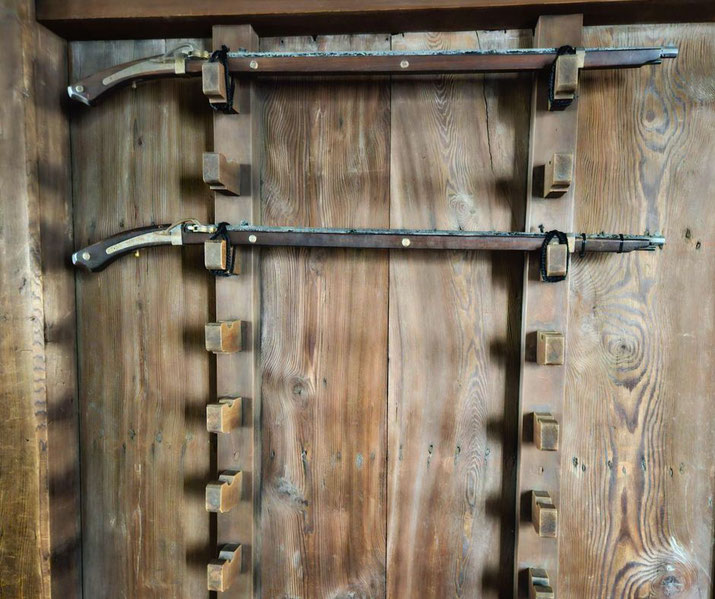The samurai and the musket: When European firearms were used in medieval Japanese warfare

The history of warfare is marked by pivotal moments of technological advancement that have forever altered the course of conflicts and the societies that wage them.
One such moment occurred during the Sengoku period in Japan, a time of social upheaval and near-constant military conflict, when the traditional art of samurai warfare was forever changed by the introduction of a foreign technology: the firearm.
The adoption of firearms by the samurai was not immediate or universal, and the process of integrating these weapons into traditional warfare tactics was fraught with challenges.
However, the potential of these new weapons to shift the balance of power was quickly recognized, leading to a period of rapid innovation and adaptation.
Japan before European arrival
The mid-16th century marked a period of significant upheaval in Japan, known as the Sengoku period, or the "Age of Warring States."
During this time, Japan was not a unified nation, but a patchwork of feudal domains ruled by daimyos, or warlords, who were constantly at war with each other for control of land and resources.
The samurai, a class of professional warriors, served these daimyos, engaging in battles and sieges characterized by close combat with swords, bows, and spears.
Meanwhile, in Europe, the Age of Exploration was in full swing. European powers, driven by a desire for new trade routes and resources, were venturing further across the globe.
Portuguese explorers, in particular, were making their way around Africa and into the Indian Ocean, establishing trade routes that would eventually lead them to the shores of Japan in 1543.
These traders brought with them a variety of goods, including silk, spices, and most importantly for our purposes, firearms.

How European guns arrived in Japan
The introduction of firearms to Japan is a story of cultural exchange, technological innovation, and strategic adaptation.
It began in 1543, when a group of Portuguese traders, blown off course by a storm, landed on the island of Tanegashima.
Among the goods they brought with them were matchlock arquebuses, a type of firearm that was relatively simple to use, yet capable of piercing the armor worn by samurai on the battlefield.
The lord of Tanegashima, Tanegashima Tokitaka, was intrigued by these new weapons and purchased two of them.
He also hired a Portuguese gunsmith to teach his own smiths how to make them.
This was the beginning of firearm production in Japan, and the start of a significant shift in the country's military technology.
The initial reaction to firearms among the samurai class was mixed. On one hand, the samurai prided themselves on their martial skills, particularly in archery and swordsmanship.
The idea of a weapon that could kill from a distance, with little need for the kind of skill and training that traditional samurai weapons required, was seen by some as dishonorable.
On the other hand, the practical advantages of firearms were undeniable. A bullet from an arquebus could penetrate samurai armor, something that arrows and swords often struggled to do.
Additionally, firearms could be used effectively by ashigaru, foot soldiers who made up the bulk of Japanese armies but lacked the extensive martial training of the samurai.
This meant that a daimyo with access to firearms could significantly increase the firepower of his army, even if only a small portion of his forces were samurai.

Rapid adoption and adaption of the new weapons
Despite the initial skepticism, the practical advantages of firearms could not be ignored.
The first significant use of firearms in a Japanese battle occurred in 1549, a mere six years after the Portuguese first introduced them.
This marked the beginning of a shift in samurai warfare, as the potential of these new weapons began to be realized.
The Battle of Nagashino in 1575 is often cited as a turning point in the adoption of firearms by the samurai.
Oda Nobunaga, one of the most powerful daimyos of the time, used firearms to devastating effect in this battle.
He deployed his arquebusiers behind wooden palisades, protecting them from cavalry charges while they fired volleys into the enemy ranks.
This innovative use of firearms and defensive structures turned the tide of the battle and demonstrated the potential of these new weapons on the battlefield.
The samurai did not merely adopt European firearms as they were, but adapted them to suit their needs. Japanese blacksmiths, renowned for their skill in crafting swords, turned their attention to firearms.
They improved upon the Portuguese designs, creating weapons that were lighter, more accurate, and more reliable.
The Japanese also developed new tactics to make the most of these weapons. They trained their troops to fire in volleys, maximizing the impact of their gunfire and mitigating the long reload times of the arquebuses.
The impact of firearms on traditional samurai warriors
On a tactical level, the use of firearms necessitated a shift away from the traditional forms of samurai combat.
Prior to the introduction of firearms, battles were often a series of individual duels between samurai, who prided themselves on their skill with the sword and the bow.
The introduction of firearms, with their ability to kill from a distance and penetrate armor, made such tactics untenable.
Instead, battles began to be fought in formations, with ranks of arquebusiers firing volleys into the enemy lines.
This was a significant departure from the individualistic style of combat that had previously characterized samurai warfare.
Strategically, the use of firearms changed the balance of power in Japan. Daimyos who were quick to adopt and master the use of firearms gained a significant advantage over their rivals.
This contributed to the process of unification under powerful leaders like Oda Nobunaga and his successor, Toyotomi Hideyoshi, who effectively used firearms to consolidate their power.
The impact of firearms on the samurai class was also profound. The samurai ethos, or bushido, placed a high value on personal skill, bravery, and honor in combat.
The use of firearms, which required less individual skill than the sword or the bow, was seen by some as contrary to these values.
However, the samurai managed to reconcile the use of firearms with their ethos by taking on the role of firearm specialists and leaders.
They became the gun captains, directing the fire of the ashigaru and maintaining their status as the elite warriors of Japan.
Why European weapons were banned in Japan
The banning of guns in Japan was not specifically targeted at European firearms, but rather a part of a broader policy implemented by the Tokugawa Shogunate during the Edo period (1603-1868).
This period followed the age of civil war (the Sengoku period), and the country was unified under the rule of the Tokugawa Shogunate.
The shogunate sought to maintain their power and control over the country, and one of the ways they did this was through strict social and economic controls.
The policy of "sakoku," or "closed country," was implemented, which severely limited foreign influence and trade.
The shogunate also implemented strict controls over the production and ownership of weapons, including firearms.
These policies were aimed at preventing the rise of potential rivals and maintaining the social hierarchy.
By controlling the production and ownership of weapons, the shogunate could limit the ability of other daimyos (feudal lords) or the warrior class (samurai) to challenge their power.
Furthermore, the Tokugawa period was a time of relative peace, and the need for firearms in warfare was significantly reduced.
The samurai class, which was at the top of the social hierarchy, began to transform from a warrior class into a bureaucratic class.
The emphasis shifted from martial prowess to administrative skills, and the samurai were encouraged to pursue education and cultural practices.
It's also worth noting that the banning of guns wasn't absolute. The shogunate still maintained some production of guns, mainly for the purpose of defending the country from potential foreign threats.
But the widespread use and production of firearms that had been seen in the previous Sengoku period were significantly curtailed under the Tokugawa Shogunate.
What do you need help with?
Download ready-to-use digital learning resources
Copyright © History Skills 2014-2025.
Contact via email
With the exception of links to external sites, some historical sources and extracts from specific publications, all content on this website is copyrighted by History Skills. This content may not be copied, republished or redistributed without written permission from the website creator. Please use the Contact page to obtain relevant permission.





